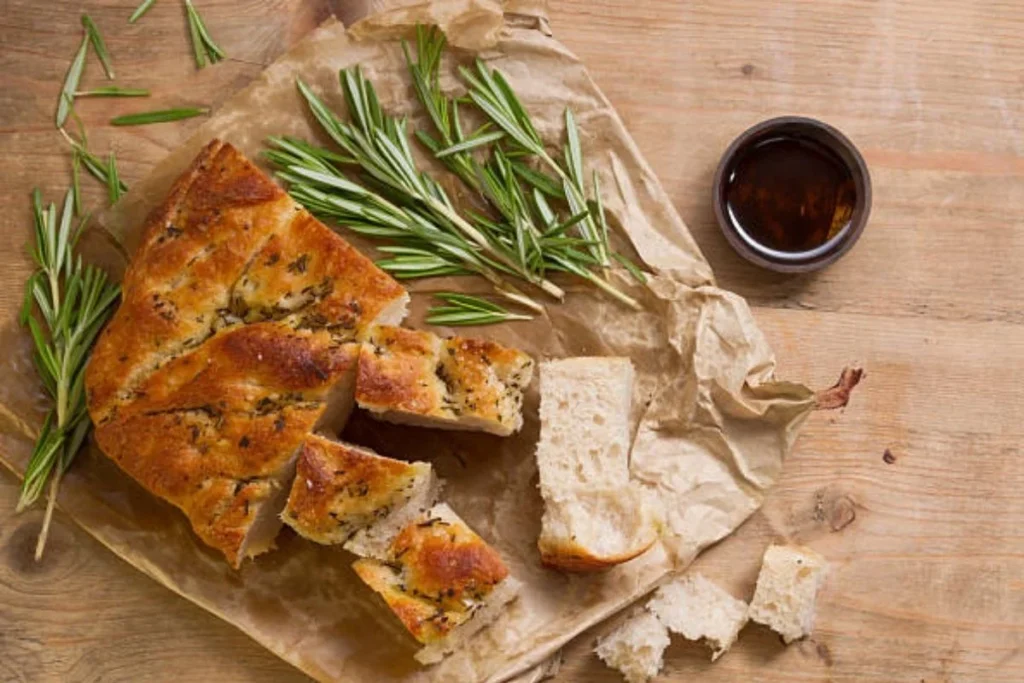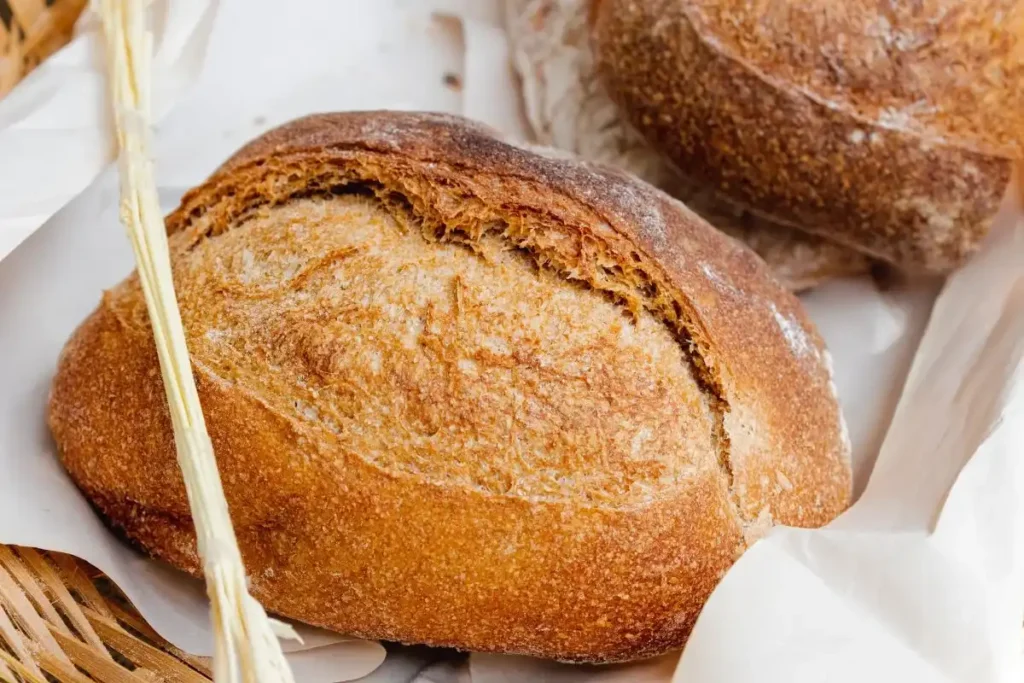
The Ultimate Guide to Reheating Frozen Focaccia Like a Pro
Focaccia, with its golden crust, yummy herbs, and light texture, is a much-loved Italian bread enjoyed on tables worldwide.
Whether you’ve baked it yourself or picked up a tasty version from your favorite bakery, chances are you’ll end up with leftovers. Freezing focaccia is a great way to keep it fresh, but reheating it can be tricky to maintain its original taste and texture.
In this ultimate guide, we’ll check out different ways to reheat frozen focaccia like a pro, making sure each bite is just as delicious as the first.
Table of Contents
ToggleWhy Freeze Focaccia?
Freezing focaccia can be a convenient way to preserve its freshness and extend its shelf life. Here are some reasons why people choose to freeze focaccia:
- Long-Term Storage: If you have made or bought a large batch of focaccia and don’t plan to consume it all within a few days, freezing allows you to store it for a more extended period.
- Preparation in Advance: Freezing is useful when you want to prepare focaccia in advance for future use. You can bake a batch, freeze it, and then thaw and reheat it when needed.
- Minimize Waste: If you’re concerned about wasting food, freezing allows you to portion the focaccia and only thaw what you need, reducing the likelihood of leftovers going stale.
- Convenience: Frozen focaccia can serve as a quick and convenient option for busy days. You can thaw it and have freshly baked or reheated bread without the need for extensive preparation.
The Freezing Process:
Proper freezing is the first step in ensuring your frozen focaccia reheats well. Once your focaccia has cooled completely, wrap it tightly in plastic wrap or aluminum foil. For added protection, you can place it in a sealable plastic bag.
Make sure to remove as much air as possible to prevent freezer burn. Label the package with the date to keep track of its freshness.

4 Methods of Reheating Frozen Focaccia
Whether you made it yourself or bought it, sometimes you end up with frozen focaccia that needs to be brought back to life.
Don’t worry! We’ll explore four different ways to reheat frozen focaccia, each with its way of making sure it tastes just as good as it did before.
Oven Method: Get it Crispy Again
Using the oven is a classic way to reheat frozen focaccia. It not only warms up the bread but also keeps that nice crispy crust. Start by preheating your oven to around 375°F (190°C).
While it’s heating up, let the frozen focaccia thaw out a bit at room temperature. Once it’s softened up, wrap it in aluminum foil, leaving a little gap for steam to escape.
Put the wrapped focaccia in the oven for about 10-15 minutes. The foil keeps the moisture in, so the inside stays moist, while also helping the crust get crispy again. Keep an eye on it and adjust the time as needed to get it just how you like it.
Microwave Method: Quick and Easy
If you’re in a hurry, the microwave is the way to go. It might not keep the crust as crispy as the oven, but it’s super convenient. Start by putting the frozen focaccia on a microwave-safe plate. Avoid using paper towels because they can make it soggy.
Set your microwave to medium power and heat the focaccia in short bursts of 20-30 seconds. Check it after each burst to see if it’s warm enough. Heating it gradually helps prevent it from getting rubbery.
Once it’s warm, you can put it in a preheated oven or toaster oven for a few minutes to crisp up the crust if you want.
Pan Method: Heat it on the Stove
The pan method adds a stovetop twist to reheating focaccia, balancing speed with keeping it tasty. Start by thawing the frozen focaccia at room temperature. Once it’s soft enough, slice it into pieces.
Heat a non-stick skillet or pan over medium heat. Put the focaccia slices on the pan and flip them occasionally to make sure they heat up evenly. The direct heat gives it a bit of a crunch on the outside while keeping it moist inside.
Depending on how thick the slices are, it usually takes 5-7 minutes. Keep an eye on it to avoid burning.
Steaming Method: Keep it Moist
If you want to make sure your focaccia stays moist, steaming is the way to go. This method works well for focaccia which dries out easily. Start by thawing the frozen bread until it’s at room temperature. Once it’s soft, wrap it in a clean kitchen towel or cheesecloth.
Boil some water in a pot with a steamer basket or any makeshift steaming setup. Put the wrapped focaccia in the steamer, making sure it doesn’t touch the boiling water directly.
Steam it for 5-8 minutes, checking it occasionally to see if it’s warm and moist enough. The steam brings the bread back to life without changing its texture too much.

Enhancing Focaccia Flavors During Reheating
Bringing frozen focaccia back to life isn’t just about warming it up – it’s a chance to make it even tastier. Here are some tips to boost the flavor of your reheated focaccia:
Add Herbs and Olive Oil: Before reheating, brush your focaccia with a mix of olive oil and chopped herbs like rosemary, thyme, or oregano. It gives a tasty kick and makes every bite smell amazing.
Try Garlic Butter: Make a yummy garlic butter to pour over your focaccia before reheating. Melt some butter, add minced garlic and parsley, and you’ve got a savory upgrade that’ll make your bread irresistible.
Go Cheesy: Sprinkle-grated Parmesan, mozzarella, or your fave cheese on top of your focaccia before reheating. It’ll melt into gooey goodness, especially if you use the oven or a pan to get that crispy cheese crust.
Drizzle Balsamic: After reheating, add a little balsamic reduction for a hint of sweetness and tanginess. Just simmer balsamic vinegar until it thickens, then drizzle it over your warm bread for a shiny finish and a burst of flavor.
Toast for Crunch: If you like some crunch, toast your reheated focaccia for a bit after warming it up. It’ll give the outside a crispy texture while keeping the inside soft and delicious.

Avoiding Common Mistakes When Reheating Frozen Focaccia
While reheating focaccia can be a straightforward process, avoiding common mistakes is crucial to ensuring the best possible outcome – a warm, flavorful, and perfectly textured bread.
Here are some pitfalls to steer clear of during the reheating process:
Mistake 1: Overheating in the Microwave
Microwaving focaccia for extended periods can result in uneven reheating and a rubbery texture. To prevent this, opt for shorter bursts of microwave heat, checking the bread’s warmth between intervals.
Supplementing with an oven or toaster oven afterward can help restore the desired crispiness.
Mistake 2: Forgetting the Thawing Step
Neglecting to thaw frozen focaccia before reheating can lead to uneven heating, leaving the center cold while the exterior becomes overly crispy. Allow the bread to thaw at room temperature for a more consistent reheating process.
Mistake 3: Lack of Moisture Control
Focaccia’s delightful balance between a soft interior and a crispy crust can be compromised if moisture control is overlooked.
When using methods like the oven, wrapping the bread in foil with a small opening allows steam to escape gradually, preventing sogginess.
Mistake 4: Inconsistent Slicing for Pan Method
When using the pan method, ensure that focaccia slices are of consistent thickness. This helps in achieving uniform reheating and prevents uneven browning. Uneven slices can lead to parts of the bread being undercooked or overly crispy.
Mistake 5: Disregarding Monitoring
Keeping a vigilant eye on the reheating process is crucial. Overlooking the bread in the oven, on the stovetop, or in the microwave can lead to undesirable outcomes. Regularly check the focaccia’s warmth, adjusting time and temperature accordingly.

How to Store Focaccia for Optimal Reheating
It’s super important to store your focaccia right if you want it to stay tasty and keep its awesome texture when you heat it up again. Whether you made it at home or got it from a bakery, these tips will help you keep your bread tasting great:
Let it Cool: After baking or buying fresh focaccia, let it cool down completely at room temperature. If you rush this part, you might end up with condensation inside the container, making the bread soggy.
Wrap it Up: Once it’s cooled, wrap the focaccia tightly in plastic wrap or aluminum foil. This protects it from air and moisture. Seal the edges well to prevent freezer burn.
Double Wrap for Extra Protection: To guard against freezer burn and odors, wrap the focaccia again. Put the wrapped bread in a resealable plastic bag, squeezing out the extra air before sealing it. This extra layer helps keep the flavor intact.
Label and Date: Stay organized in your freezer by labeling and dating the wrapped focaccia. That way, you can easily find and use the oldest loaves first.
Freeze Individual Portions: If you plan to reheat individual slices instead of the whole loaf, slice the focaccia before freezing it. Wrap each slice separately so you can reheat it without thawing the whole loaf.
Use Freezer-Safe Containers: You can also store focaccia in containers made for the freezer. Make sure the container is airtight to keep out freezer odors and preserve the bread’s flavor.
Thaw Carefully: When you’re ready to reheat, thaw the frozen focaccia carefully. Take it out of the freezer and let it thaw in its wrapping at room temperature. Thawing slowly helps keep the texture and prevents too much moisture from soaking in.
Reheat Right Away: Once it’s thawed, reheat the focaccia as soon as you can. Don’t leave it out at room temperature for too long, or it might lose quality. Pick your favorite way to reheat it and enjoy the fresh flavors!
How Long Does Focaccia Last in the Fridge
You can keep focaccia in the fridge for about 3 to 4 days. To keep it fresh, wrap it in plastic or put it in a sealed container before you pop it in the fridge.
But remember, putting it in the fridge might change how it feels in your mouth, so it’s best to munch on it within the first couple of days for the yummiest taste and texture. If you want to keep it even longer, you can freeze it for about 2 to 3 months.
Just wrap it really well in plastic and then stick it in a freezer-safe bag or container. When you’re ready to eat it, let it thaw in the fridge overnight, and then warm it up in the oven to make it taste just like it did when it was fresh.
Conclusion
In conclusion, mastering the art of reheating frozen focaccia is a game-changer for enjoying this delightful bread like a pro. With the right methods, and tips you can savor the flavors and textures that make focaccia a timeless favorite.
Experiment with different techniques to find the one that suits your preferences, and enjoy the convenience of savoring homemade or store-bought focaccia at its best, even when reheated.
Lindsey Mackenzie
About me
Hi there! I’m Lindsey Mackenzie, the founder of Bake Smartly. Baking has been my passion since childhood, growing up in my father’s bakery. With Bake Smartly, I’m excited to share my love for all things sweet and savory. Join me on this delicious journey as we whip up scrumptious treats and sprinkle joy into every bite!






